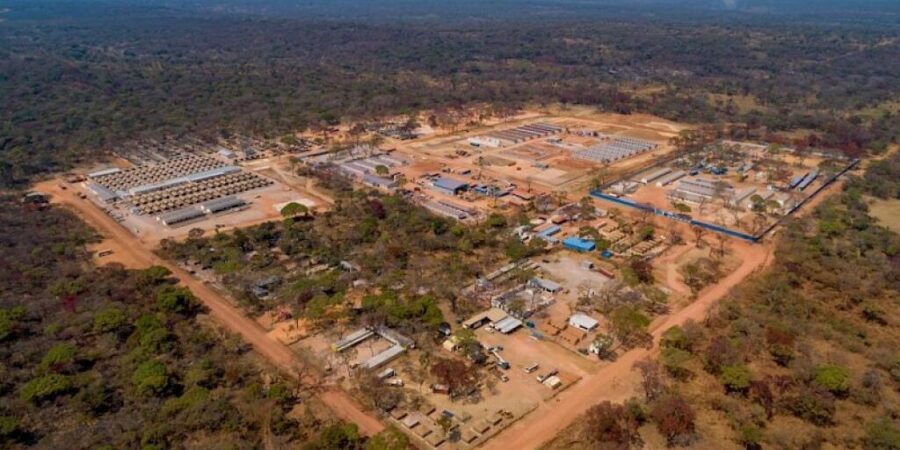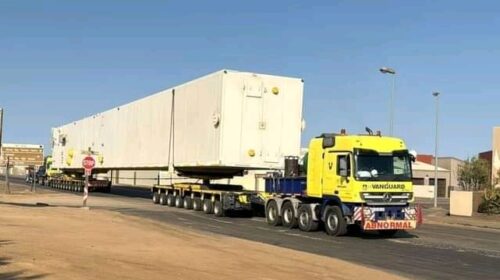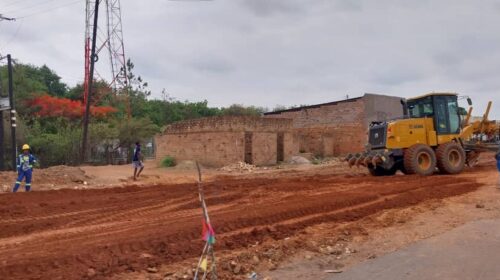Kakula copper mine underground development enters very high grade ore zone | DRC
Underground development at the Kakula Copper Mine enters zone of ultra-high-grade ore. Kakula’s northern and southern access drives to connect next month, allowing highly-productive stoping operations to begin in centre of orebody in +8% copper. Excellent construction progress being made on Kakula’s concentrator plant; first production now expected in July 2021
KOLWEZI, DEMOCRATIC REPUBLIC OF CONGO – Robert Friedland and Yufeng “Miles” Sun, Co-Chairmen of Ivanhoe Mines, announced on the 19th of this month that excellent progress is being made advancing underground mine development at the Kakula Mine in the Democratic Republic of Congo (DRC), with current mining grades of up to 11% copper in one of the access drives being advanced from the northern decline.
Kakula’s northern and southern dual access drives are expected to be connected (the mining term is “holing”) next month, allowing highly-productive mining (stoping) operations to begin in high-grade zones. Approximately 260 metres of tunneling remains until the access drives are connected (see figures 1 and 2).
“Development of the dual access drives from Kakula’s northern decline has entered a zone of chalcocite-rich ore grading up to 11% copper over a height of 6.6 metres,” said Mr. Friedland. “These copper grades are extraordinary in a global context, but are not unexpected. They are real-time confirmation of the exceptional quality of the Kakula resource, which sits at the apex of any ranking worldwide.”
In addition, access drift 1 from Kakula’s southern decline has moved from the medium-grade ore zone (+5 copper) into the high-grade ore zone, and currently is traversing the +8% copper zone as it approaches the “holing” position in the centre of the deposit. Access drift 2 from Kakula’s southern decline currently is traversing the +5% copper zone and is expected to quickly enter the +8% copper zone (see figures 1 and 2).
“We are looking forward to achieving our first “holing” between the northern and southern declines,” said Mr. Friedland. “It will open up important high-grade copper reserves, and enable ventilation to flow through dedicated underground airways, which have been developed between Kakula’s northern and southern declines. This marriage between Kakula’s northern and southern declines will facilitate the ramp up in production and dramatically increase the efficiency of our underground logistics, and further improve safety.”
Figure 1: Underground development completed to October 18, 2020 (in black) and scheduled development (green, brown, purple) to November 30, 2020. Also shown are the +3%, +5% and +8% copper contours and the location where the northern and southern access drives are scheduled to join in November (red circle).
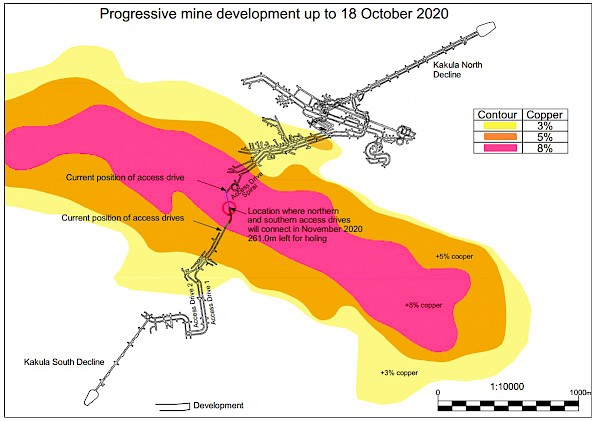
Figure 2: Kakula’s underground development completed to October 18, 2020 (in red). The black star shows where the northern and southern access drives are scheduled to join in November.
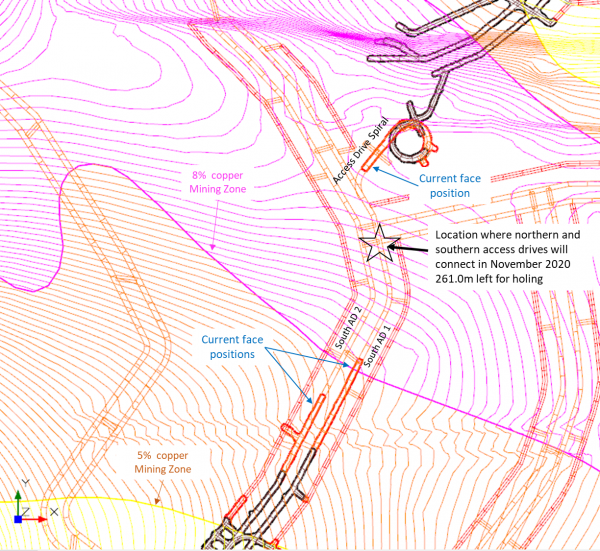
A Niton (portable XRF) reading on the tip of a chalcocite-rich piece of ore grading 67.8% copper from Kakula’s northern access drive spiral. Grey-colored chalcocite has the greatest percentage of copper of all the common sulphide-copper-bearing minerals ─ almost 80% copper by weight.
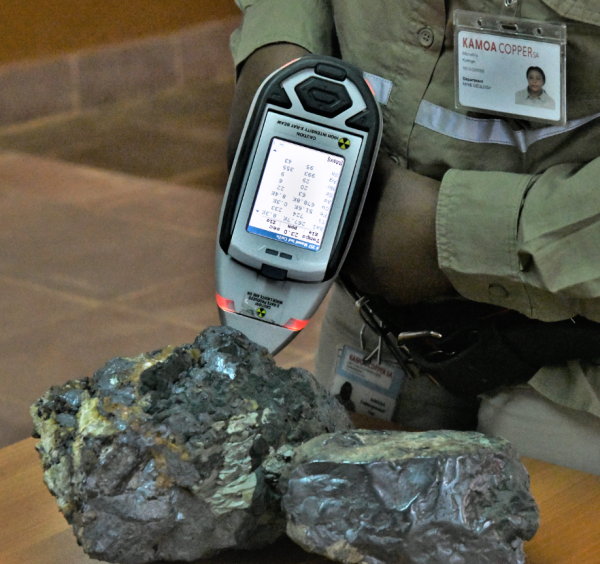
Mine geologist Micheline Kyenge examines the chalcocite-rich face in Kakula’s northern access drive spiral. The prevalence of the grey-coloured chalcocite accounts for the ultra-high-copper grades recently encountered.
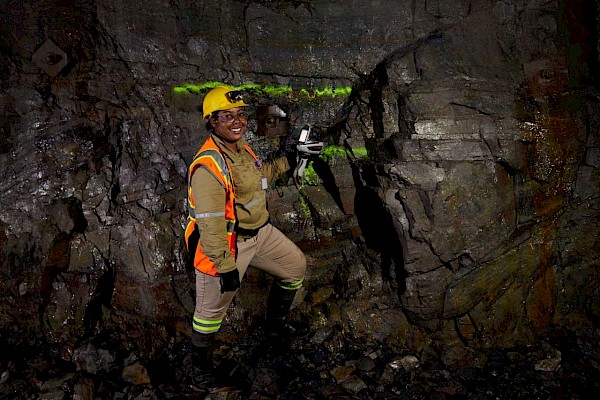
Excellent construction progress being made on Kakula’s concentrator plant; first production now expected in July 2021, at the beginning of Q3 2021 guidance
Steve Amos, Kamoa Copper’s Head of Projects, stated: “The updated project schedule for the initial 3.8 million-tonne-per-annum (Mtpa) concentrator plant indicates that first ore now is expected at the beginning of our Q3 2021 planned window. There has been an enormous effort by the project and construction teams to not only maintain the milestone dates with the challenges presented by the pandemic, but to place ourselves in a position to commission early. We are delighted with the progress made to date.”
“It will be enormously beneficial if we can commission early,” said Rochelle De Villiers, Kamoa Copper’s Co-CFO. “We look forward to generating revenue as early as possible, which will allow us to advance the project’s Phase 2 development with internal cash flow. The long-lead items for the second 3.8 Mtpa concentrator plant have been ordered and the second phase of our development now is officially underway.”
Mark Farren, CEO of Kamoa Copper said: “We will leverage what we have learned thus far into Phase 2 construction, and expand the project at a sustainable rate that minimizes peak funding. Phases 1 and 2 combined are expected to produce approximately 400,000 tonnes of copper per year.”
“Our engineers are already planning the steps necessary to implement phases 3, 4 and 5, which would expand the project’s production rate to at least 19 million tonnes of ore a year.”
“We currently have more than 6,000 people on site, most of whom are employed by sub-contractors for the construction of the mining infrastructure and concentrator. This will transition gradually as we move into production. We expect to employ close to 2,000 permanent Kamoa Copper employees once both concentrator plants are operating and the first two mines are producing at a steady state of 7.6 million tonnes of ore a year.”
“We have a talented, young Congolese workforce who are eager to learn and grow as we develop this mine into a world-class operation. The once-in-a-century metamorphosis from a giant, greenfields discovery into a successful world-leading mining operation is inherently challenging; however, our people have the special blend of experience and commitment to do it successfully,” Mr. Farren added.
The two, 7-megawatt ball mills at Kakula’s initial 3.8 Mtpa processing plant, with the girth gears now installed. A 3D illustration of the finished ball mills (shown in green) is below, with the next two ball mills for the recently-initiated second processing plant shown in magenta.
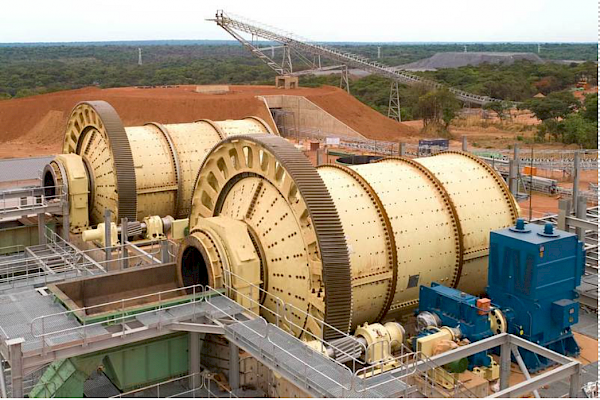
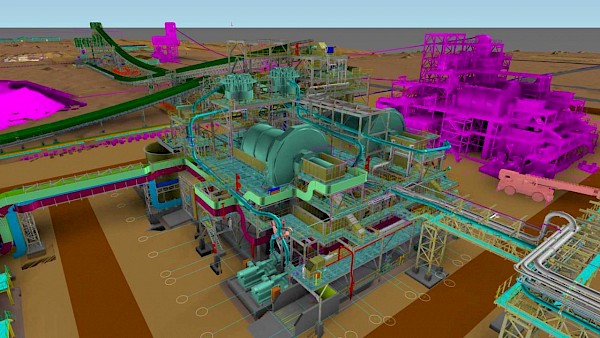
Ongoing construction of Kakula’s initial 3.8 Mtpa processing plant, showing the assembled ball mills and the first four flotation tanks.
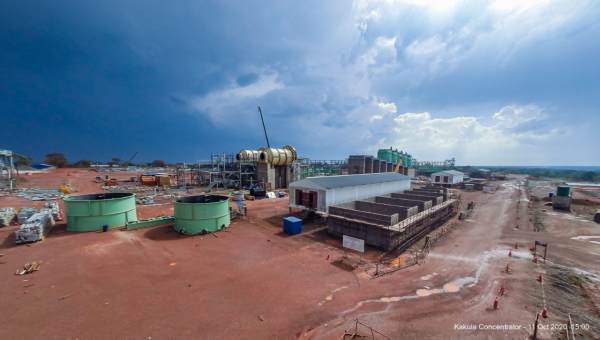
Kapenda Mutombo pours concrete at Kakula’s copper concentrate storage area.
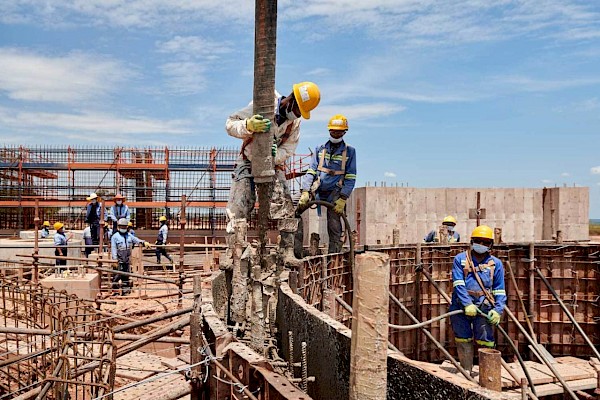
Deli Mamadou installing Kakula’s tailings pipeline. Approximately one half of the mine’s tailings will be sent back underground to fill mined-out voids, significantly reducing the surface tailings storage.
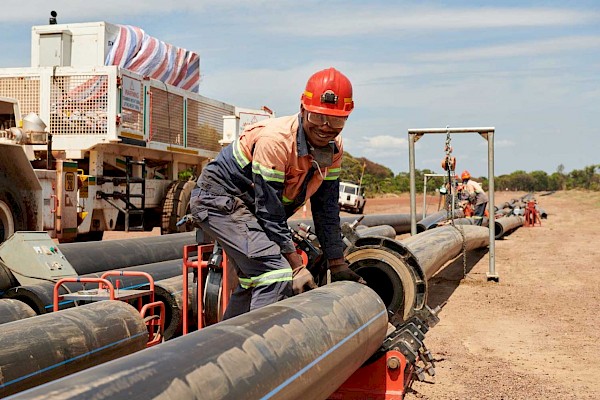
Yannick Kankenke (left) and Tresor Mukadi (right) servicing an Epiroc double boom drill rig at the Kakula workshop.
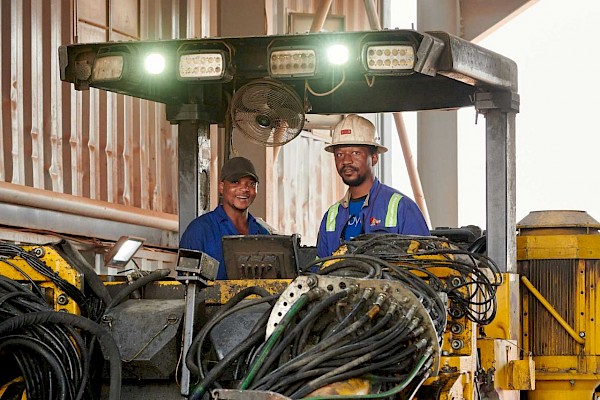
Kamoa-Kakula expected to be connected to the national power grid in December, providing the project with clean, renewable 220-kV hydropower
Ben Munanga, General Manager of Ivanhoe Mines Energy and a senior member of the executive management team at Kamoa Copper, stated: “We have made excellent progress upgrading the Mwadingusha hydroelectric power station and at the new Western Dispatch substation in Kolwezi. In December, we expect to tie in the 30-kilometre, 220-kilovolt (kV) power line connecting this substation to Kamoa-Kakula, and supply the mine with reliable and clean hydro-generated electricity from the national grid.”
The upgrading work at the 72-megawatt Mwadingusha hydropower plant is nearing completion and electricity from all of Mwadingusha’s six turbines is expected to be integrated into the national power grid in the first quarter of 2021. The work is being conducted by engineering firm Stucky, of Lausanne, Switzerland, under the direction of Ivanhoe Mines and its joint-venture partner, Zijin Mining Group, in conjunction with the DRC’s state-owned power company, La Société Nationale d’Electricité (SNEL).
“A long-term, sustainable supply of electricity is essential to Ivanhoe’s vision to develop Kamoa-Kakula in an environmentally and socially responsible manner,” said Mr. Friedland. “Hydropower is the cleanest energy solution for Kamoa-Kakula and will ensure the project will be among the world’s lowest greenhouse gas emitters per unit of copper produced.”
Mr. Friedland also said that a recent, independent audit of Kamoa-Kakula’s greenhouse gas intensity metrics performed by Hatch Ltd., of Mississauga, Canada, a leading, international environmental consulting firm, confirmed that Kamoa-Kakula will be among the world’s lowest greenhouse gas emitters per unit of copper produced, validating the project’s commitment to be a leader in environmentally-responsible copper mining. In addition, approximately one half of the mine’s tailings will be mixed with cement and pumped back underground to fill mined-out voids, resulting in a surface tailings containment facility that is tiny compared to other major mines.
Tresor Kalenga Musoya (top), Liang Yang (middle) and Chanzhong Yang (bottom) installing the 220-kV power line that will transport clean, renewable hydropower from the DRC national grid to the Kamoa-Kakula Project.
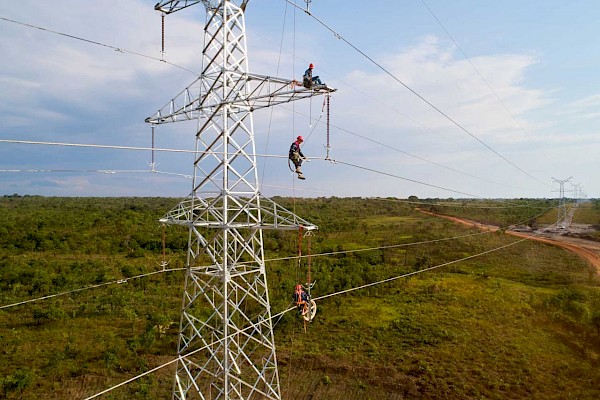
Contract workers from Andritz Hydro of Vevey, Switzerland, upgrading the penstocks and emergency intake valves at theMwadingusha hydropower plant.
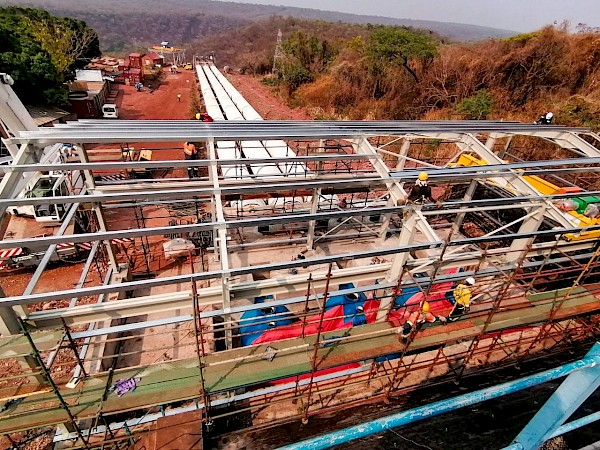
Kamoa-Kakula’s October monthly mine progress update to be issued in early November
Ivanhoe plans to issue its regular Kamoa-Kakula monthly mine progress update for the month of October in early November, which will provide details on the project’s underground development advancement, tonnage and grade of the project’s pre-production ore stockpiles, and construction progress of the initial 3.8 Mtpa concentrator plant and associated infrastructure.
![]()


